Meet Our Available Puppies
Find the perfect ‘tail’ for your story!
The Puppy You've
Been Waiting For.
Product Title Here
Put a bird on it tumblr trust fund sustainable williamsburg green juice.
Product Title Here
Put a bird on it tumblr trust fund sustainable williamsburg green juice.
Product Title Here
Put a bird on it tumblr trust fund sustainable williamsburg green juice.
Product Title Here
Put a bird on it tumblr trust fund sustainable williamsburg green juice.
Product Title Here
Put a bird on it tumblr trust fund sustainable williamsburg green juice.
Product Title Here
Put a bird on it tumblr trust fund sustainable williamsburg green juice.
April 3, 2025
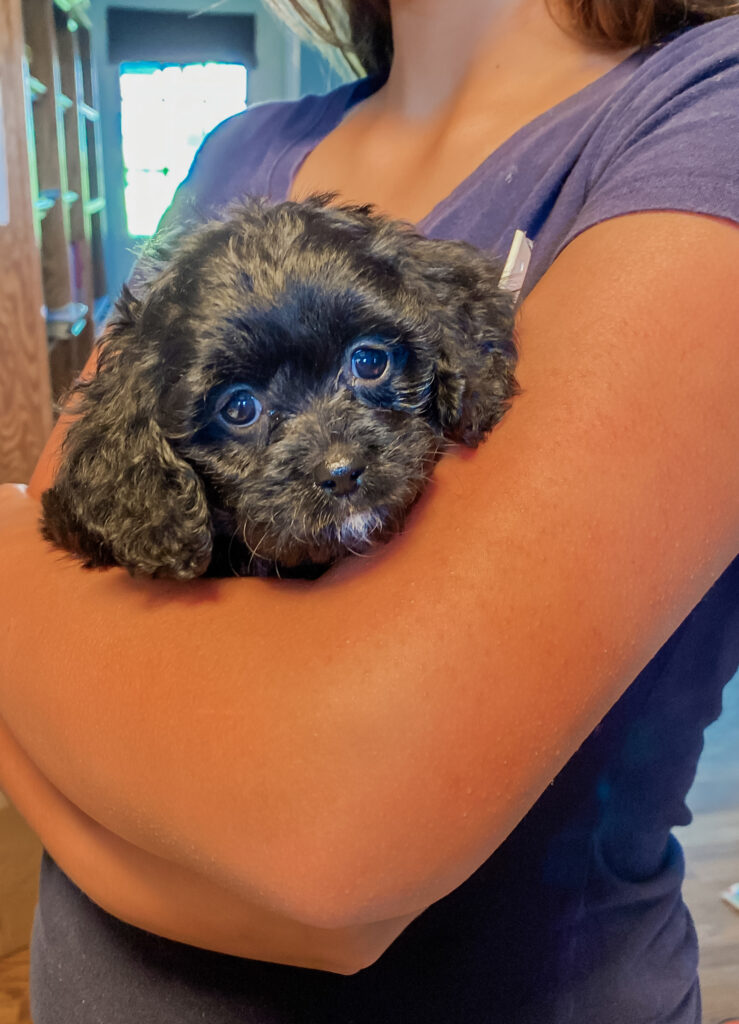
If you’ve ever dreamed of a dog that fits comfortably in your lap, makes you laugh with their intelligence, and is affectionate to a fault-meet the Toy Cavapoo. This petite, curly-coated companion is more than a pretty face. They’re adaptable, people-oriented, and surprisingly easy to care for, making them an ideal choice for many modern families.
Whether you’re living in a high-rise or a farmhouse, the Cavapoo Toy fits in. But don’t let their size fool you-these little dogs have big personalities and even bigger hearts.
In this post, we’ll cover everything from size and generations to temperament, health, and care. If you’re considering one for your home, you can view our current Toy Cavapoo puppies here. If you want to hear why Cavapoo are one of my favorite breeds and how they’ve helped my children and others as ESA reach out and I’d be happy to chat.
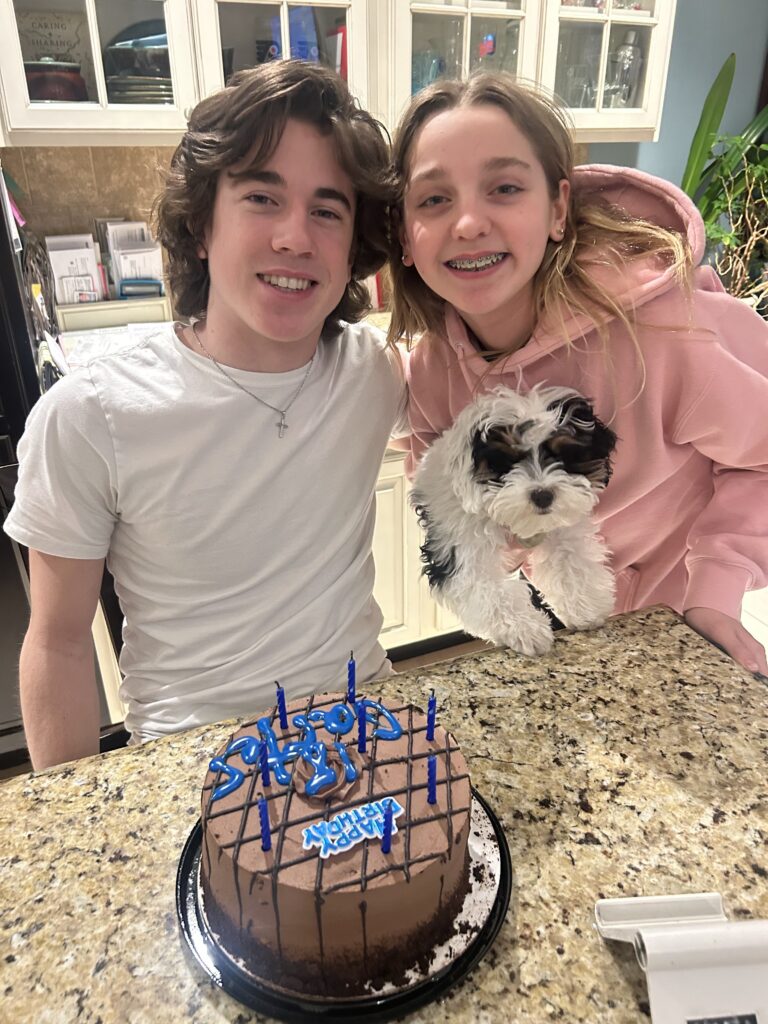
What Is a Toy Cavapoo?
The Toy Cavapoo is a hybrid between a Toy Poodle and a Cavalier King Charles Spaniel. Standing 9–12 inches tall and weighing 7–13 pounds, they are a compact version of the popular Cavapoo. What they lack in size, they more than make up for in charm.
Their coats vary from wavy to curly and can range in color from apricot and cream to black, red, chocolate, gold, or even merle. And thanks to their Poodle heritage, many Toy Cavapoos are low-shedding and allergy-friendly.
But perhaps the most endearing feature is their expression-those soulful eyes seem to see right into you.
Why Choose a Toy Cavapoo?
There are plenty of small breeds out there-so what makes the Toy Cavapoo stand out?
- Compact but sturdy – Unlike teacup breeds, Toy Cavapoos have a slightly more robust frame, making them more suitable for active homes.
- Highly intelligent – Poodles rank as one of the smartest breeds, and that sharp mind comes through in the Cavapoo toy.
- Great emotional companions – Their Cavalier side makes them emotionally in tune, which is why they’re often used as emotional support or therapy animals.
- Adaptable – They’re as happy living in a small apartment as they are in a larger home with a yard.
Absolutely! Here’s a polished section you can drop into your blog under a heading like:
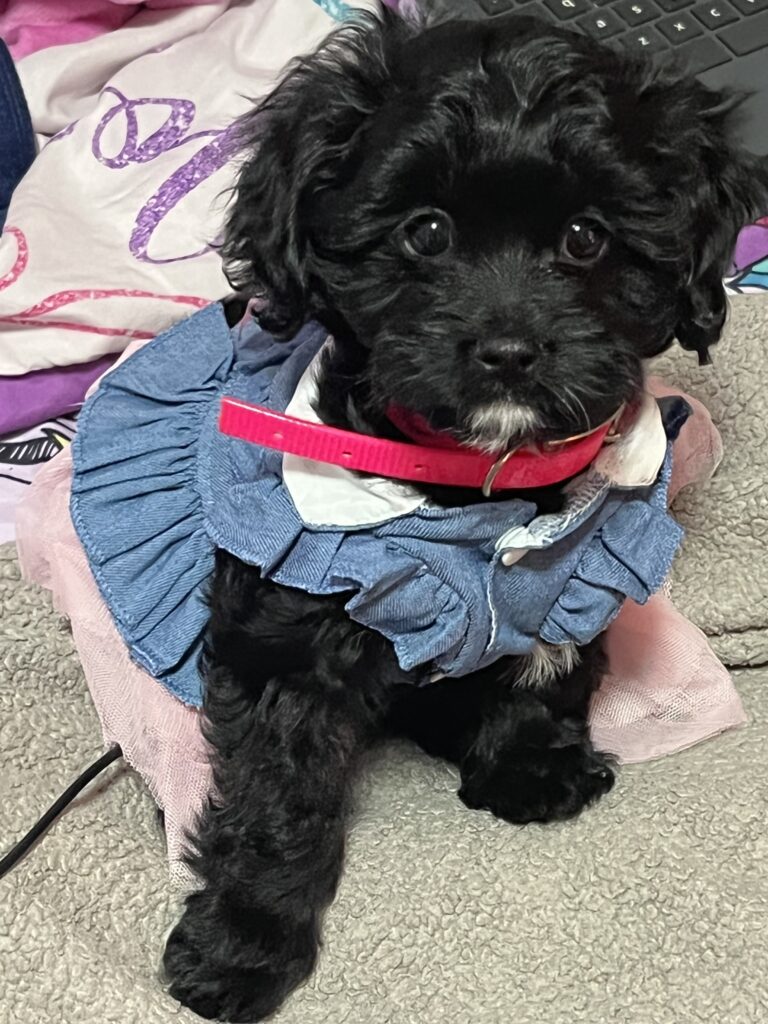
The Origin of the Cavapoo (and Their Noble Roots)
The Cavapoo—also called a Cavoodle or Cavadoodle—is a relatively modern designer breed that has taken the world by storm thanks to its charming looks and loving nature. But to understand what makes the Toy Cavapoo so special, it’s worth digging into not only its own origin story, but the distinguished histories of the two breeds that created it.
🐶 The Cavapoo: A Modern Classic
The Cavapoo first gained popularity in the late 1990s and early 2000s, particularly in Australia and the United Kingdom. Breeders were looking to combine the affectionate and people-loving nature of the Cavalier King Charles Spaniel with the intelligence and low-shedding coat of the Poodle. The result? A small, hypoallergenic, and emotionally intuitive companion dog that quickly won over families, singles, and seniors alike.
While larger Doodle breeds (like the Labradoodle and Goldendoodle) were already capturing attention, the Cavapoo carved out its niche in the small-dog space. Since then, it’s become one of the most beloved doodle breeds worldwide. And its easy to understand why. A cavapoo’s eyes follow your every move and their favorite place in the world in on your lap.
👑 The Cavalier King Charles Spaniel: A Royal Companion
The Cavalier King Charles Spaniel has roots stretching back centuries in England. Named after King Charles II, who was rarely seen without a spaniel at his side, these small dogs were prized by royalty for their gentle temperament and elegant appearance.
They were originally bred as lapdogs, often appearing in portraits of European nobility during the 17th and 18th centuries. Despite their aristocratic origins, Cavaliers are incredibly approachable and sweet-natured, which makes them a perfect half of the Cavapoo equation.
Key traits inherited by the Cavapoo:
- Deep emotional bond with humans
- Calm, nurturing demeanor
- Adaptability to both relaxed and active lifestyles
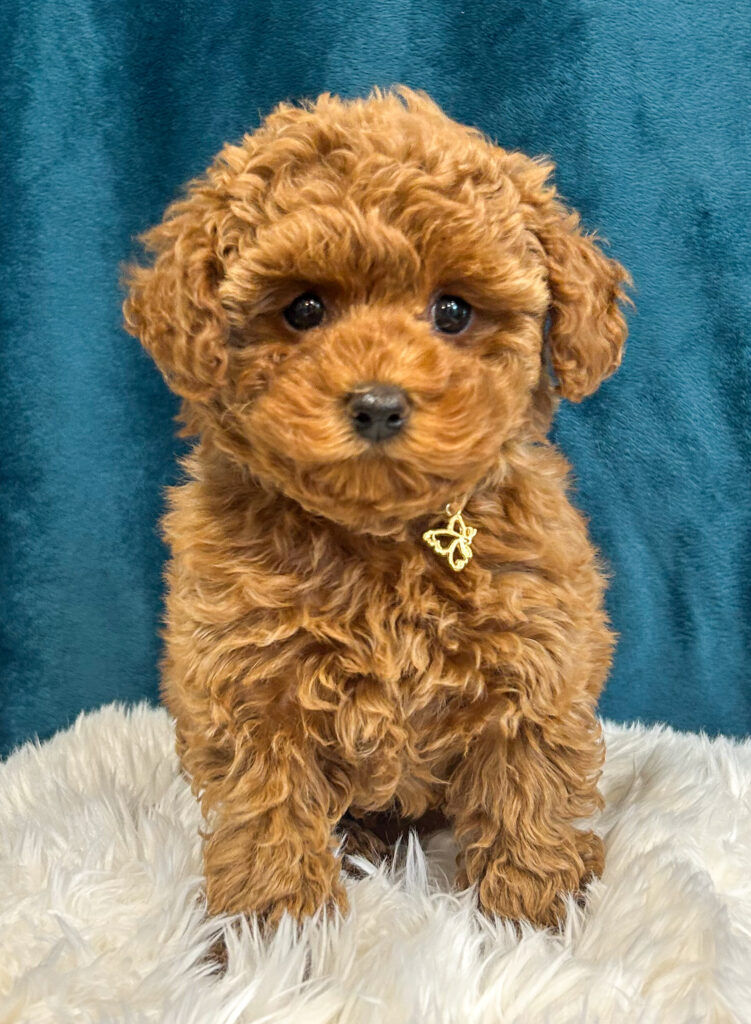
The Toy Poodle: Elegance Meets Intelligence
The Poodle is often misunderstood as just a froufrou show dog, but this breed is anything but superficial. Originating in Germany (despite its French reputation), the Poodle was first developed as a water retriever, known for its athleticism and sharp mind.
The Toy Poodle, in particular, was bred down in size primarily for companionship—especially among European aristocrats who valued them for their elegance and trainability. But make no mistake: even at their smallest, Poodles retain the second-highest intelligence ranking among all dog breeds.
Key traits inherited by the Cavapoo Toy:
- High intelligence and eagerness to learn
- Low-shedding, often hypoallergenic coat
- Playful and energetic personality
A Match Made in Dog Heaven
The intentional cross between the Cavalier and the Toy Poodle brought together the best of both worlds: brains and heart, beauty and charm, activity and calm. The Cavapoo, and especially the Toy-sized version, continues to prove that when thoughtfully bred, designer dogs can be every bit as wonderful—and sometimes even more suitable for modern life—as purebreds.
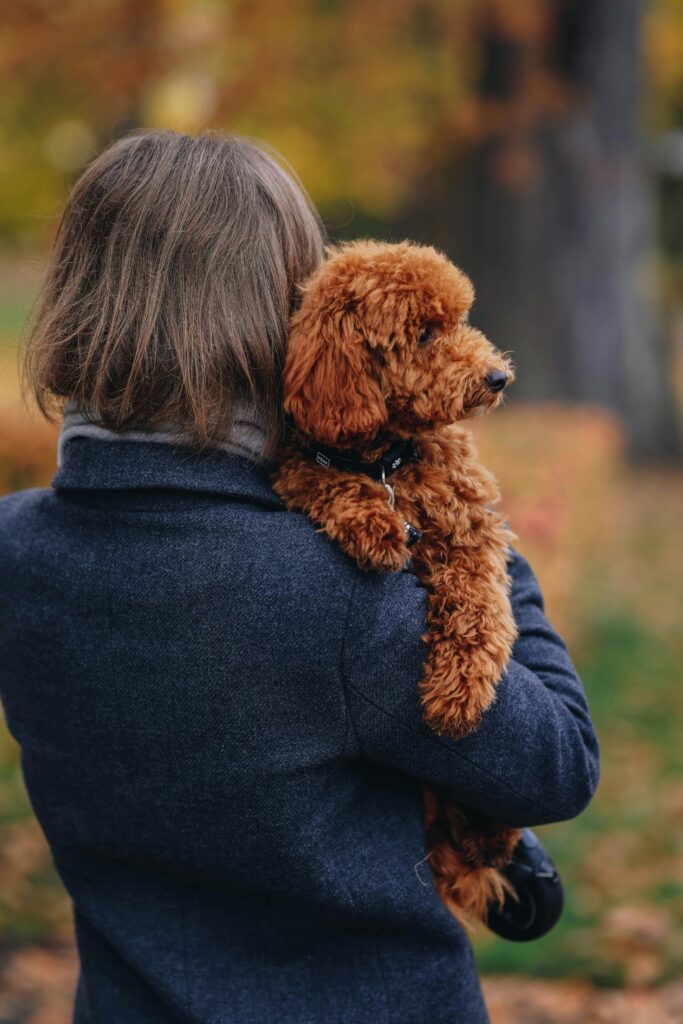
What is the Temperament of a Toy Cavapoo?
The Toy Cavapoo is more than just a pretty face. This little dog comes with a well-balanced temperament that makes it incredibly easy to live with—and even easier to fall in love with.
General Temperament
Toy Cavapoos are known for their gentle, warm-hearted nature and an intelligence that shines through in everything from training sessions to their everyday interactions. They tend to strike a beautiful balance between being alert and aware of their surroundings, yet not prone to excessive barking or nervous energy. While they enjoy play and activity, they’re rarely hyperactive, making them an ideal fit for both calm and moderately active households.
This breed is inherently eager to please, which translates into easy bonding, quick learning, and a sense of loyalty that’s hard to beat.
Toy Cavapoo Interaction with Family
This is a dog that thrives on connection. Toy Cavapoos form deep emotional bonds with their humans and often become a little shadow, following their favorite person from room to room. They’re famously affectionate and intuitive, picking up on emotional cues and often offering quiet companionship during tough moments.
They are typically very patient with children, though supervision is important—especially due to their smaller size. Proper handling should be taught early to prevent accidental injuries. And when it comes to other pets? With proper socialization, Toy Cavapoos tend to be friendly and accepting, making them a great addition to multi-pet households.
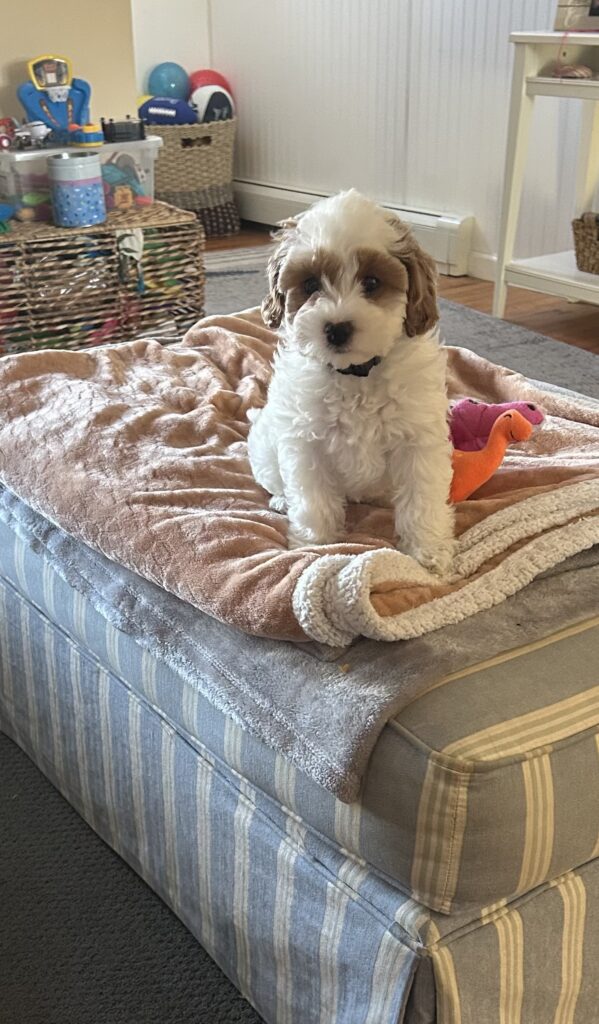
Behavioral Traits
Thanks to their Poodle lineage, Toy Cavapoos are highly intelligent and trainable. They respond well to positive reinforcement, and even basic training becomes a bonding experience. Their willingness to learn makes them excellent candidates for crate training, agility, or even therapy dog work.
That said, their sensitive nature does mean they don’t love being alone for long periods. Separation anxiety is common if they’re left without adequate stimulation or companionship. To avoid boredom or anxiety-based behaviors like barking or chewing, be sure to provide:
- Interactive toys and puzzles
- Gentle, daily training sessions
- A predictable routine
- Time spent near their people
Whether you’re a first-time dog owner or an experienced pet parent, the Toy Cavapoo’s balanced blend of sweetness, smarts, and social grace makes them an absolute joy to raise.
Toy Cavapoo vs. Teacup and Mini Cavapoos
Here’s a quick overview of how they compare:
| Feature | Teacup Cavapoo | Toy Cavapoo | Mini Cavapoo |
|---|---|---|---|
| Height | 8–10 inches | 9–12 inches | 12–14 inches |
| Weight | 5–10 lbs | 7–13 lbs | 10–18 lbs |
| Lifespan | 12–18 years | 12–18 years | 12–15 years |
| Ideal For | Seniors, gentle adults | Small families, travelers | Active families |
| Exercise Needs | Low | Moderate | Moderate to High |
| Fragility | Very high | Medium | Lower |
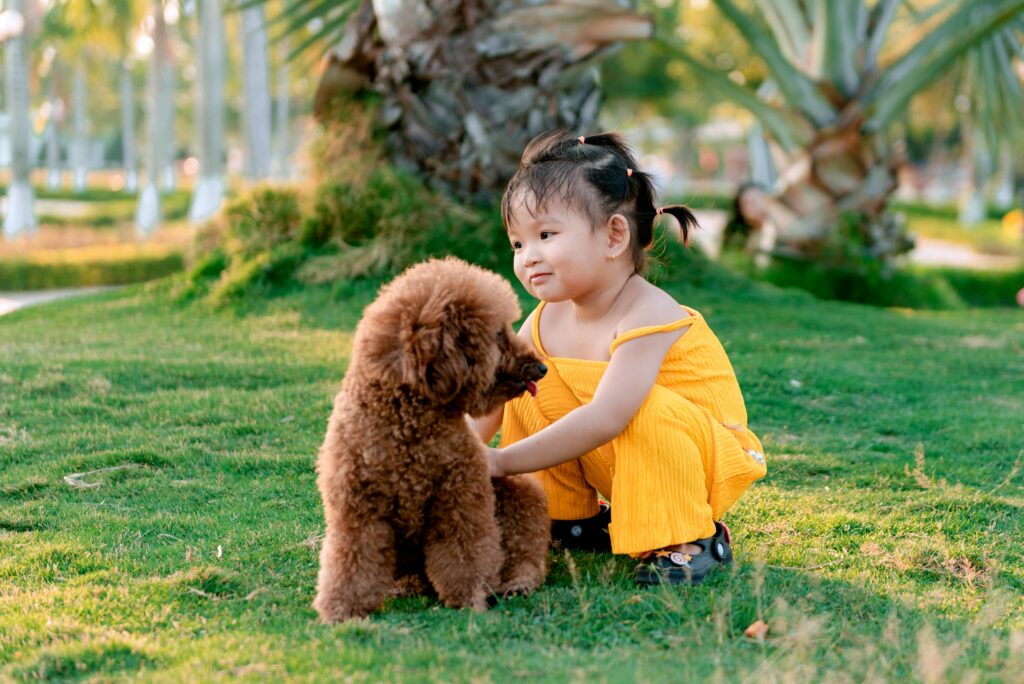
How Big Do Toy Cavapoos Get?
If you’re drawn to the charm of the Cavapoo but want something a bit more compact, the Toy Cavapoo might be the perfect fit. These pint-sized pups pack all the personality of their larger cousins into a much smaller frame—ideal for those with limited space, active travel lifestyles, or simply a preference for smaller companions.
Average Size of a Toy Cavapoo
A full-grown Toy Cavapoo typically stands between 9 and 12 inches tall at the shoulder and weighs anywhere from 7 to 13 pounds. Though they fall on the smaller end of the Cavapoo size range, they’re slightly sturdier than teacup varieties, making them better suited for families with respectful children or other pets.
While each dog is unique, most Cavapoo toy will fit comfortably in your lap, under a plane seat, or in a small dog stroller without issue. You can learn more about Adult Cavapoos in our handy guide https://storytaildogs.com/2025/04/13/cavapoo-adult-guide/
Predicting Your Toy Cavapoo’s Size
While individual dogs vary, your breeder should be able to give you a fairly accurate size estimate. Here’s a rule of thumb:
- Toy Cavapoos usually reach their full size by 11–12 months
- Weigh them at 3.5 months and double the weight for a ballpark adult size
Knowing the parents’ sizes also helps significantly-reputable breeders track lineage carefully.
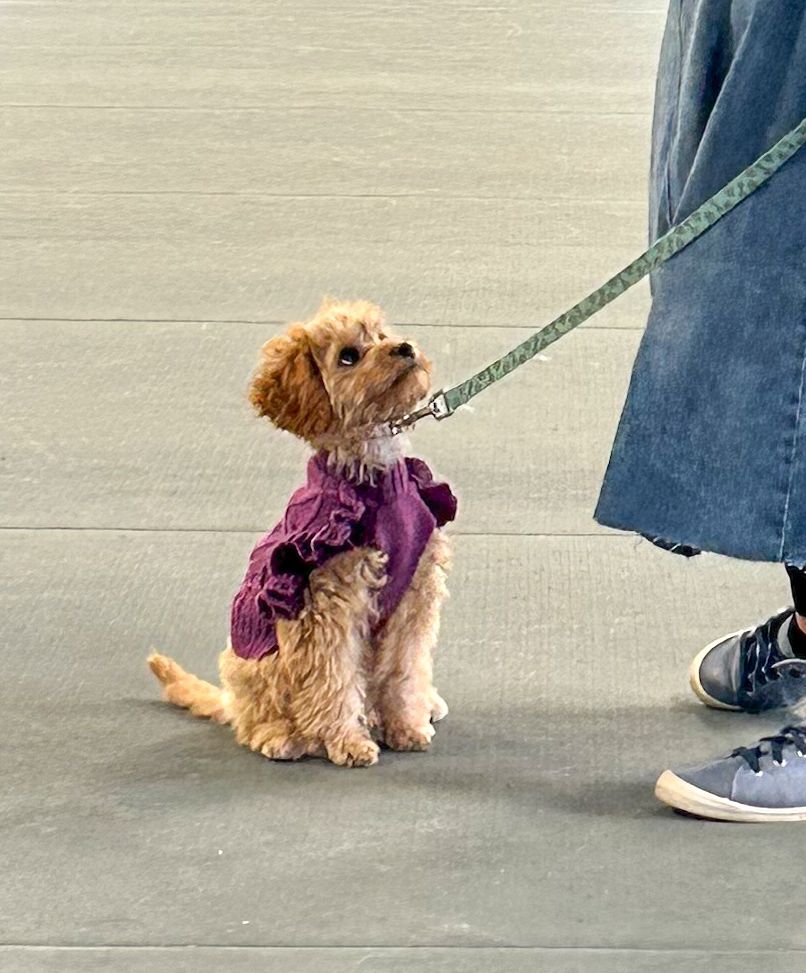
Understanding Toy Cavapoo Generations
The generation of a Cavapoo tells you how far along it is in the breeding process-and it affects size, coat, and allergy friendliness.
- F1 (Cavalier + Poodle): Balanced mix of traits
- F1b (F1 + Poodle): More hypoallergenic, curlier coats
- F2 (F1 + F1): More variation in appearance and temperament
- Multigenerational: Selectively bred for consistency in coat and personality
For allergy concerns, an F1b Toy Cavapoo is usually the safest bet.
Learn more about Cavapoo Generations here https://storytaildogs.com/2025/01/16/cavapoo-generations-guide/
Personality: What’s It Like Living With a Toy Cavapoo?
Toy Cavapoos are famous for their sweet, people-loving nature. They’re affectionate without being clingy, playful but not hyper, and curious without being destructive-if properly trained.
Key traits:
- Craves human interaction
- Loves to cuddle
- Friendly with other pets
- Great with kids (with supervision)
- Eager to learn and please
That said, they can be prone to separation anxiety, so crate training, a stable routine, and interactive toys are your best friends.
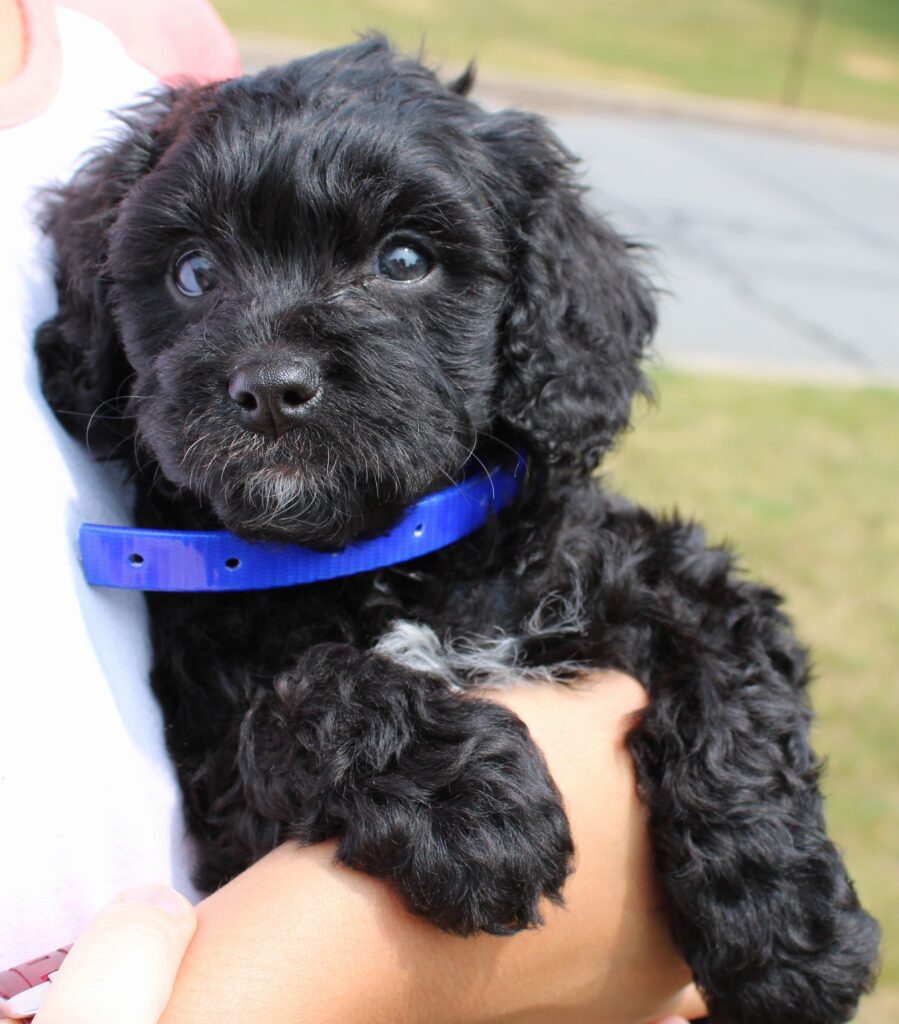
Training and Socialization
These dogs are smart, but like any dog, they need direction. Early training helps set boundaries and prevents unwanted behaviors like barking or chewing.
- Use positive reinforcement (treats, praise, clickers)
- Keep sessions short-5-10 minutes is enough
- Introduce new people, pets, and experiences early and often
Looking to dive deeper? Check out this guide to socializing your puppy.
Common Health Issues in Toy Cavapoos
Though Toy Cavapoos benefit from hybrid vigor, they’re still susceptible to some hereditary conditions. Reputable breeders perform genetic testing to avoid passing on health issues.
Common concerns include:
- Mitral Valve Disease (MVD) – A heart condition inherited from Cavaliers
- Patellar Luxation – Knee cap displacement, common in small breeds
- Progressive Retinal Atrophy (PRA) – A degenerative eye disorder from the Poodle line
- Ear Infections – Their floppy ears trap moisture; regular cleaning is a must
With good care, most Toy Cavapoos live 12–18 years. You can read more details about Cavapoo Health Problems here https://storytaildogs.com/2025/01/13/cavapoo-puppies-health-problems/
Grooming, Diet, and Daily Care
Toy Cavapoos don’t require high maintenance-but they do need consistency.
Grooming
- Brush 2–3 times per week
- Trim every 6–8 weeks (or as needed)
- Clean ears weekly
- Brush teeth regularly + dental chews
You can learn more about Cavapoo grooming in our complete guide https://storytaildogs.com/2025/01/08/cavapoo-grooming-complete-guide/
Diet
- Choose high-quality food for small breeds
- Avoid overfeeding (they gain weight easily)
- Feed smaller meals more frequently for teacup-sized dogs
Exercise
- 30–45 minutes of daily activity is usually enough
- Short walks, fetch, or indoor play sessions work great
- Mental enrichment is just as important as physical exercise
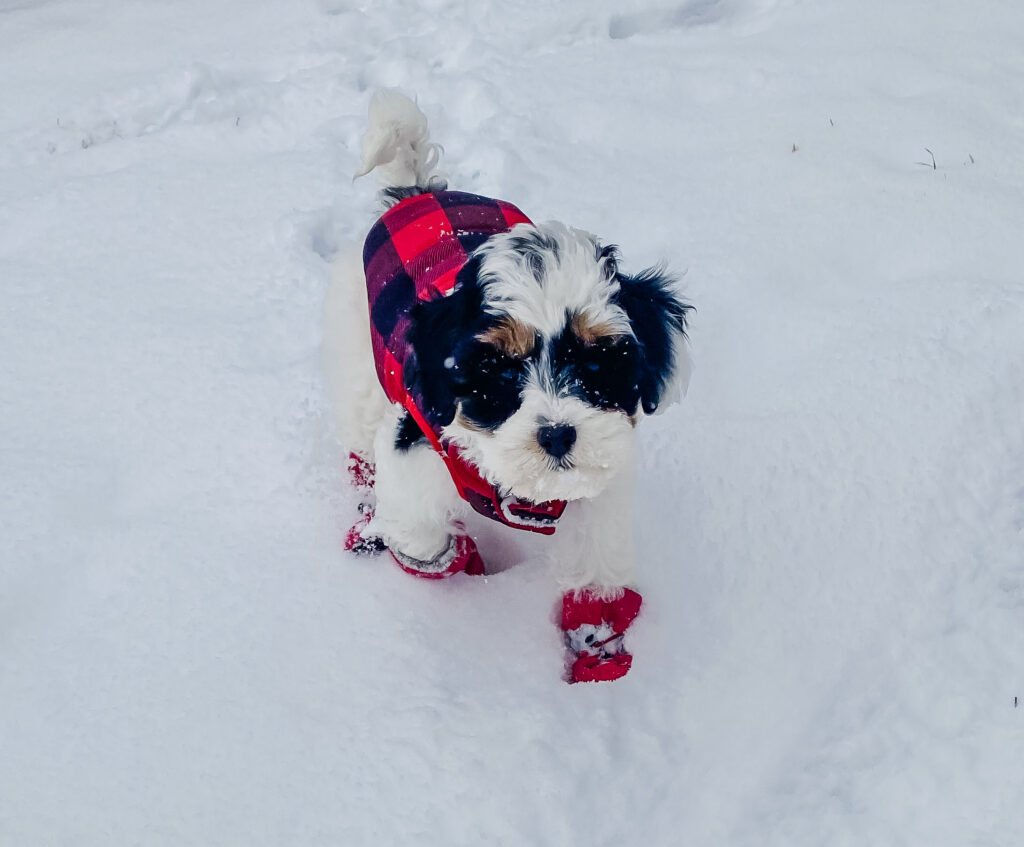
Living Environment: Are Toy Cavapoos Good for Apartments?
Absolutely. Their size, temperament, and modest exercise needs make Toy Cavapoos a great fit for apartment living. Just make sure they have a cozy space, daily walks, and some puzzle toys to stay mentally sharp.
They’re not meant to be left outside unattended and thrive when close to their humans.
Care Requirements: What a Toy Cavapoo Needs to Thrive
While Toy Cavapoos are relatively easy to care for, they do have specific needs that should be met to keep them healthy, happy, and well-behaved. Their small size doesn’t mean less responsibility—it means focused, intentional care in a few key areas.
Grooming
Toy Cavapoos often have wavy to curly coats that require regular grooming to stay clean and tangle-free. Plan to brush your dog at least 2–3 times per week, and schedule a professional trim every 6–8 weeks to maintain their coat length and hygiene. Be sure to check and clean their ears regularly, especially since their floppy ears can trap moisture, making them more prone to infection. A quick wipe of the eyes and trimming around the paws will also keep them looking and feeling their best.
Diet & Nutrition
Because they’re a small breed, Toy Cavapoos need high-quality, small-breed-formulated dog food that matches their age and activity level. These little dogs are prone to weight gain if overfed, so it’s important to practice portion control and avoid frequent table scraps. Regular mealtimes help regulate digestion and support good behavior, and make sure they always have access to clean water.
Daily Exercise
While they’re not high-energy dogs, Toy Cavapoos do need daily exercise to stay mentally and physically balanced. A couple of short walks, some indoor play, and a game of fetch or tug are usually enough. They also love problem-solving games, so keep interactive toys and puzzle feeders on hand to stimulate their sharp minds.
Training
The combination of intelligence and eagerness to please makes Toy Cavapoos a dream to train. Start early with basic commands, crate training, and housebreaking using positive reinforcement methods—treats, praise, and patience go a long way. Regular short sessions are more effective than occasional long ones and help prevent behavioral issues from forming.
Socialization
A well-socialized Toy Cavapoo is confident, friendly, and adaptable. Early exposure to a variety of people, places, animals, and sounds helps shape a dog who can go with the flow. Whether you’re heading to a pet-friendly café, introducing them to another dog, or taking a stroll through a new neighborhood, every positive interaction helps build their resilience and trust.
With consistent care, Toy Cavapoos flourish into well-rounded companions who are a joy to live with—and love deeply in return.
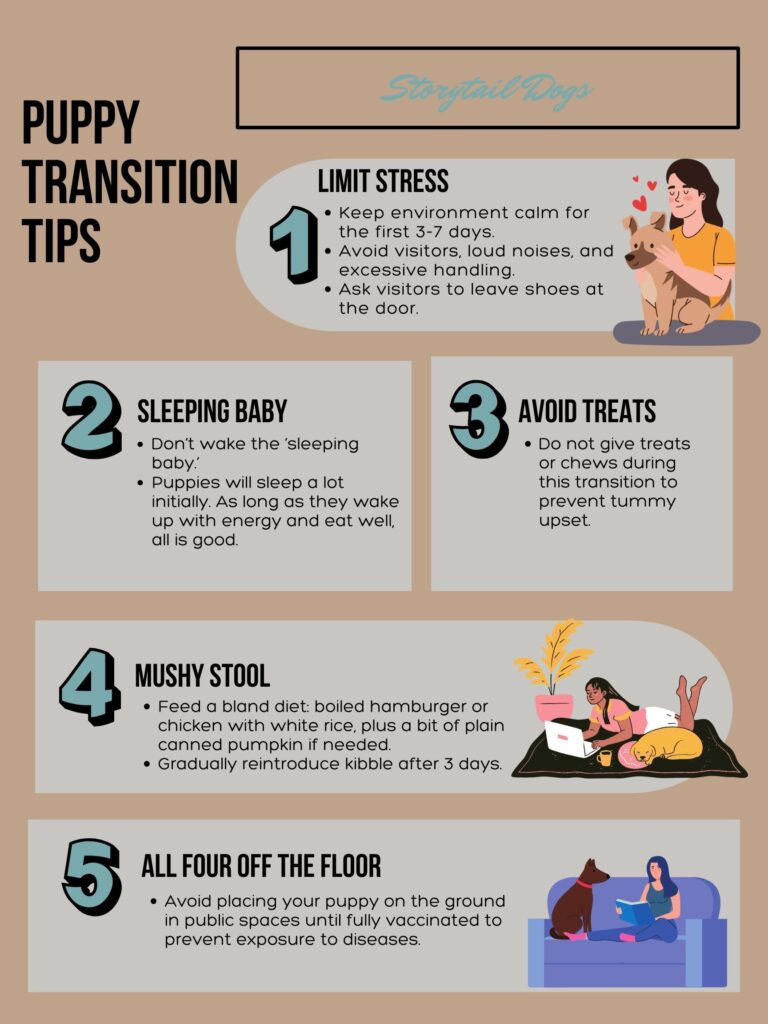
Living with a Toy Cavapoo: What Daily Life Looks Like
Living with a Toy Cavapoo is a bit like having a cheerful, four-legged shadow—one who’s always ready for a cuddle, curious about your next move, and delighted to be involved in your daily life. Thanks to their small size and adaptable personality, Toy Cavapoos fit beautifully into a wide range of living situations—but there are a few essentials to keep in mind.
Suitable Environments
Whether you live in a cozy apartment, townhouse, or a spacious home, the Toy Cavapoo will likely feel right at home—as long as they’re close to their people. They’re an indoor dog at heart and do best in environments where they receive plenty of interaction and companionship.
Because of their small size and friendly nature, they’re ideal for city living or quieter households. That said, they still need mental and physical activity each day to stay balanced and content.
A Toy Cavapoo’s Ideal Daily Routine
Toy Cavapoos thrive on predictable routines, and a typical day for one might look something like this:
- Exercise: Start the day with a short walk or sniff session around the yard or block. Even 20–30 minutes of low-impact movement helps burn off energy and supports mental clarity.
- Playtime: Midday is a great time for a few games—tug-of-war, puzzle toys, or chasing a squeaky toy around the living room will do the trick.
- Meals: Stick to a consistent feeding schedule, usually two meals a day, with occasional healthy treats for training or enrichment.
- Rest: These dogs love to curl up in a cozy spot, especially if it’s near you. Naps between activities help them recharge.
- Training: Incorporate short, fun sessions throughout the day—practice basic commands, introduce a new trick, or use mealtime as a reward-based learning moment.
Consistency helps your Toy Cavapoo feel secure—and the routine becomes something they look forward to.
Training & Socialization: Setting the Stage for a Confident Companion
Training a Toy Cavapoo isn’t just easy—it’s rewarding. Their high intelligence and natural desire to please make them wonderfully responsive to positive reinforcement techniques like treats, praise, and clicker training. Start early, keep sessions short and engaging, and you’ll be amazed at how quickly they catch on.
Socialization is just as important as training. Introducing your Cavapoo to new environments, people, pets, and sounds from an early age builds confidence and reduces the risk of anxiety or fear-based behaviors later in life. Try to include a mix of indoor and outdoor experiences—walks in the neighborhood, trips to a pet-friendly store, or gentle playdates with other dogs.
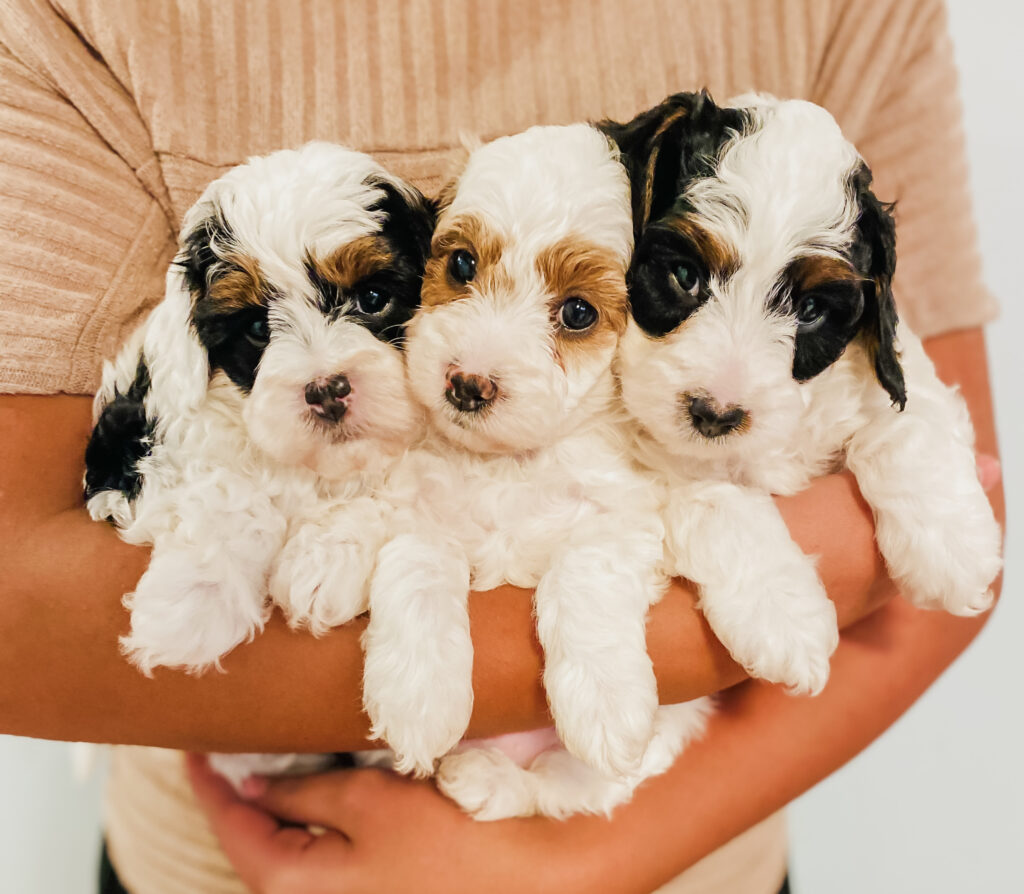
How to Find a Toy Cavapoo the Right Way
Choosing the right breeder is everything. A reputable breeder will:
- Let you meet the parents (in person or virtually)
- Offer transparent health testing records
- Focus on temperament as much as appearance
- Provide a health guarantee
- Be available for questions after the sale
Stay away from sub-par breeders who cut corners or won’t answer questions.
You can learn more about responsible breeding from the AKC’s guide here.
Final Thoughts: Is a Toy Cavapoo Right for You?
If you’re looking for a well-rounded companion-one who brings laughter, loyalty, and love into your home-a Toy Cavapoo is a standout choice.
Their intelligence, affectionate nature, and small size make them perfect for a wide range of households, from young families to retirees. They do require regular care and attention, but what they give in return is immeasurable.
Ready to meet your match? Check out our available Toy Cavapoos here.
Frequently Asked Questions About Toy Cavapoos
Are Toy Cavapoos good apartment dogs?
Yes! Their compact size, moderate exercise needs, and quiet temperament make Toy Cavapoos perfect for apartment living. They do require daily walks, playtime, and lots of human interaction, but they’re very content living in smaller spaces—as long as they’re near their people.
Are Toy Cavapoos good with kids and other pets?
With early socialization and gentle handling, Toy Cavapoos are great with respectful children and get along well with other pets. Their playful yet gentle nature makes them adaptable to many family settings—but always supervise interactions with young children due to the dog’s small size.
Are Toy Cavapoos easy to train?
Yes! Toy Cavapoos are highly intelligent and eager to please, which makes them excellent candidates for obedience, agility, and even therapy dog training. They thrive with positive reinforcement methods like praise, treats, and consistency. Early training sets the foundation for a well-behaved adult dog.
Are Toy Cavapoos hypoallergenic?
While no dog is 100% hypoallergenic, Toy Cavapoos are considered a good choice for allergy sufferers. Thanks to their Poodle heritage, many have low-shedding, curly coats that produce less dander. If allergies are a concern, ask your breeder about coat type and consider an F1b generation, which is more Poodle-heavy.
What is a Teacup Cavapoo?
A Teacup Cavapoo is an even smaller version of the Toy Cavapoo, usually bred by selecting the tiniest Cavalier King Charles Spaniels and Toy Poodles. Teacups generally weigh 5 to 10 pounds and stand around 8 to 10 inches tall. While undeniably adorable, they are more fragile and may carry additional health risks, especially if bred irresponsibly. Teacup Cavapoos require very gentle handling and specialized care.
How much do Toy Cavapoos cost?
The price for a Toy Cavapoo from a responsible breeder typically ranges from $2,500 to $4,000, depending on factors like lineage, coat color, and generation. Be cautious of much lower prices, which can be a red flag for sub-par breeders. Always ask about health testing, parent temperaments, and early socialization practices. You can read more about toy cavapoo cost here https://storytaildogs.com/2025/05/10/cavapoo-price/
What are the cons of a Toy Cavapoo?
While Toy Cavapoos are wonderful companions, they may not be the right fit for everyone. Some potential downsides include:
Fragility – Though sturdier than teacup breeds, they still need gentle handling, especially around young children.
Separation anxiety – They form strong bonds and don’t like being left alone for long periods.
Grooming requirements – Their coats need regular brushing and professional grooming every 6–8 weeks.
Cost – Their popularity and the care involved in ethical breeding often mean a higher price tag.
Do Toy Cavapoos bark a lot?
Toy Cavapoos are not known to be excessive barkers. They’re generally quiet and well-mannered, but like any dog, they may bark when they’re excited, startled, or feeling anxious. Early training and proper socialization can help them learn appropriate barking habits. If your Toy Cavapoo barks excessively, it may be a sign they need more attention, stimulation, or reassurance.
How long do Toy Cavapoos live?
With good care, Toy Cavapoos typically live between 12 and 18 years. Their longevity is partly due to their small size and the genetic advantage of being a hybrid breed. Regular vet check-ups, a healthy diet, and daily activity can all contribute to a long, happy life.
While Toy Cavapoos are wonderful companions, they may not be the right fit for everyone. Some potential downsides include:
Fragility – Though sturdier than teacup breeds, they still need gentle handling, especially around young children.
Separation anxiety – They form strong bonds and don’t like being left alone for long periods.
Grooming requirements – Their coats need regular brushing and professional grooming every 6–8 weeks.
Cost – Their popularity and the care involved in ethical breeding often mean a higher price tag.
Leave a Reply Cancel reply
Storytail Dogs
A Dog For Your Story. Focused on READ dogs, therapy dogs, and resilient family companions.
@storytaildogs
© StorytailDogs 2024. All rights reserved. | Legal |